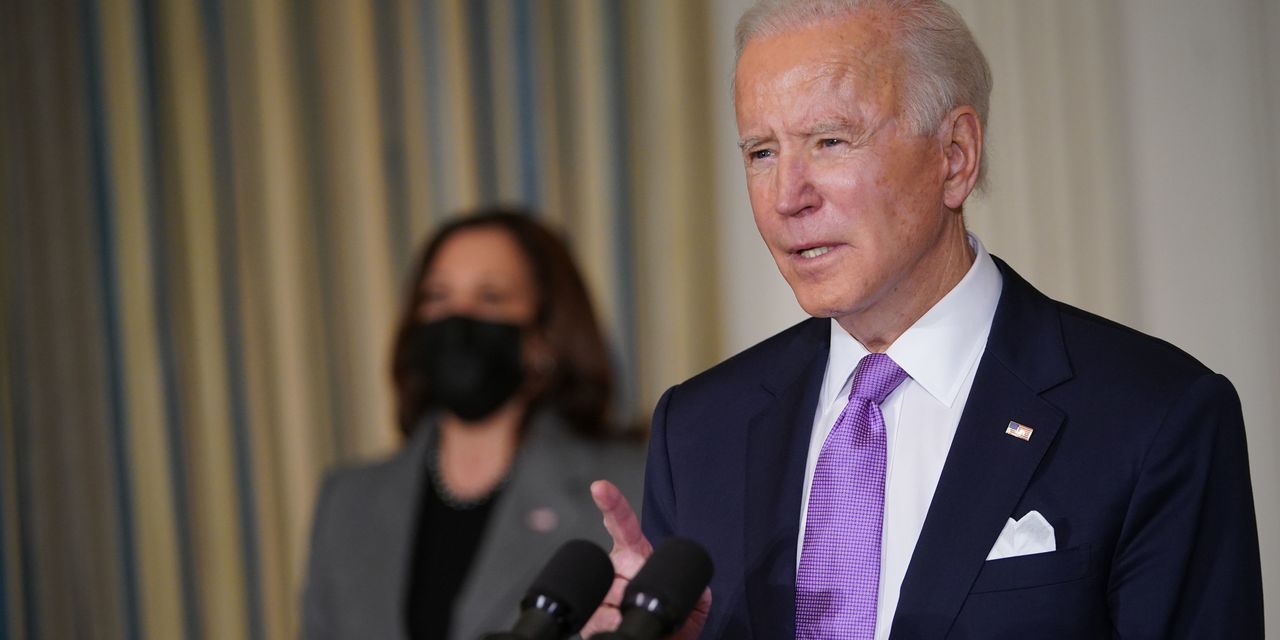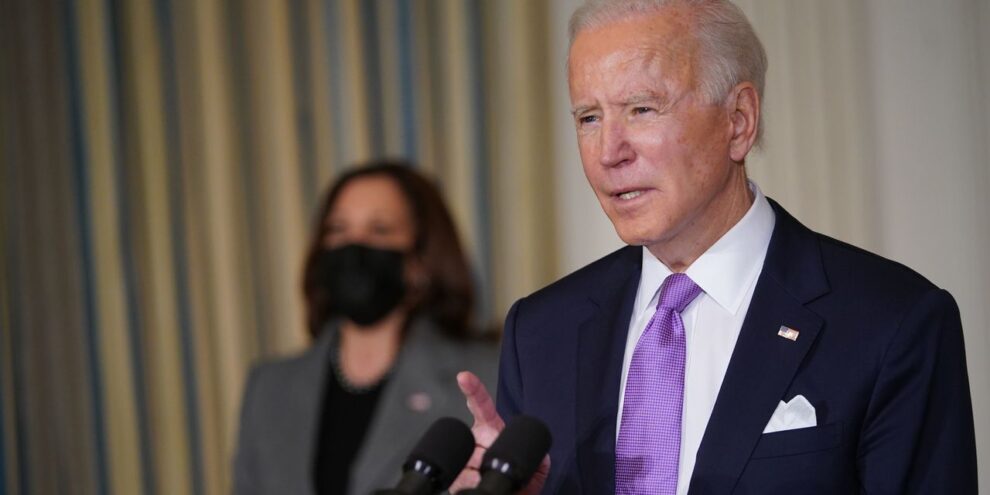
Bouncing back from a recession, the U.S. economy will grow 6.6% in 2021, Goldman Sachs projects. After that things get tougher for President Joe Biden, and he will be hard pressed to match President Donald Trump’s record on inequality.
Work from home and enhanced digital platforms are forcing airline employees, waiters, retail clerks and other low-wage workers into job markets that pay less, require relocation or offer too few employment opportunities. Office buildings, storefronts, aircraft and other assets must be scrapped or repurposed at significant cost.
Biden’s reorientation of the U.S. economy—slowing oil and gas well and pipeline development and raising the social cost of carbon used to set environmental regulations—will leave still more workers and assets stranded.
Stimulus won’t cut it
Tax cuts and stimulus payments can’t rescue most of those people and businesses, and the Federal Reserve has run the string on easy-money policies.
Municipalities and businesses, often with questionable credit ratings, are feasting on cheap debt to survive pandemic shutdowns but many lack credible plans to right their finances afterward.
Last year, Tesla TSLA, +0.55% sold nearly 500,000 electric vehicles, whereas Ford’s F, bonds have been downgraded to junk status.
If the Fed raises interest rates as unemployment falls, it would instigate business failures that push high-tax local governments into budget crises that instigate self-defeating cycles of even higher taxes, business and middle-class flight, more empty offices and store fronts and decaying transit systems and schools.
If the Fed continues to enable foreign borrowing to finance companies and cities at rock-bottom rates, profligate borrowing will erode the dollar’s status BUXX, -0.19% as the global reserve currency. America could become vulnerable to a debt crisis as multinationals and foreign central banks slow purchases of dollar-denominated securities.
Dignified work
Firing up growth in an economy that offers dignified work for all workers requires microeconomic solutions.
Near term, promoting more business-based training programs and a skills-based immigration policy would drive high-tech growth, enable innovation generally and create jobs in new locations for the sandwich makers, accountants and other service providers displaced from New York’s and California’s collapsing civil fabrics.
Those would include enhanced unemployment benefits linked to reskilling programs, making social benefits such as housing subsidies transferrable across state lines and federal funding for relocation stipends—all would be unsettling for Republicans. And rethinking the thicket of state licensing requirements that impeded interstate mobility of skilled professionals and technicians—that would upset Biden’s union constituencies.
Longer term, progress requires repurposing high schools toward digital trades and raising the U.S. fertility rate—now at 1.8—to sustain our labor force and support for the elderly. Conversations about how families and workplaces are structured to encourage larger families reaches deeply into personal choices and private business practices that progressives and conservatives alike would find discomforting.
Along with a better skilled and sustainable labor force, greater investments in infrastructure and intellectual capital are needed For decades, federal support for R&D has been declining, while China offers more subsidies to technology champions.
Allocating more funds to R&D is easy—if the Federal Reserve can print money for stimulus checks, it could instead print money to build better roads and finance university and industry research—but spending effectively is another matter.
Biden’s choices
Biden’s choices for his economic team were driven through climate change, pro-union and diversity screens, and their perceptions of the Trump years and what needs to be done can result in policies that poorly allocate capital—just as the Trump team had its lens for progress.
Prior to the election, American utilities were already racing to build wind, solar and battery storage, and the auto industry rushing to improve battery design and increase production capacity to support EV production.
Surging stock prices are making capital terribly cheap for green businesses
During the Obama administration, industrial policy—as epitomized by high-speed rail, Solyndra and car batteries—posted a discouraging record. During the Biden years, investing more rapidly in green technologies faster than technology is advancing could leave us with obsolete facilities five or 10 years from now and even bigger growth headaches.
From 2016 to 2019, poverty dropped sharply to its lowest level since 1959. The wealth of Hispanics, blacks and the bottom half of the households overall increased 65%, 33% and 35%—much more than for whites and the upper half of households overall.
Biden’s campaign rhetoric notwithstanding, the Trump economy worked for everyone and now the new president faces some daunting challenges to beat that record.
Peter Morici is an economist and emeritus business professor at the University of Maryland, and a national columnist.
More bold ideas from Peter Morici:
Biden has more room to spend than conservatives might like
Biden needs this bold strategy to reimagine the economy so it can create jobs for everyone
Biden can forge bipartisan cooperation with a bold infrastructure program











Add Comment